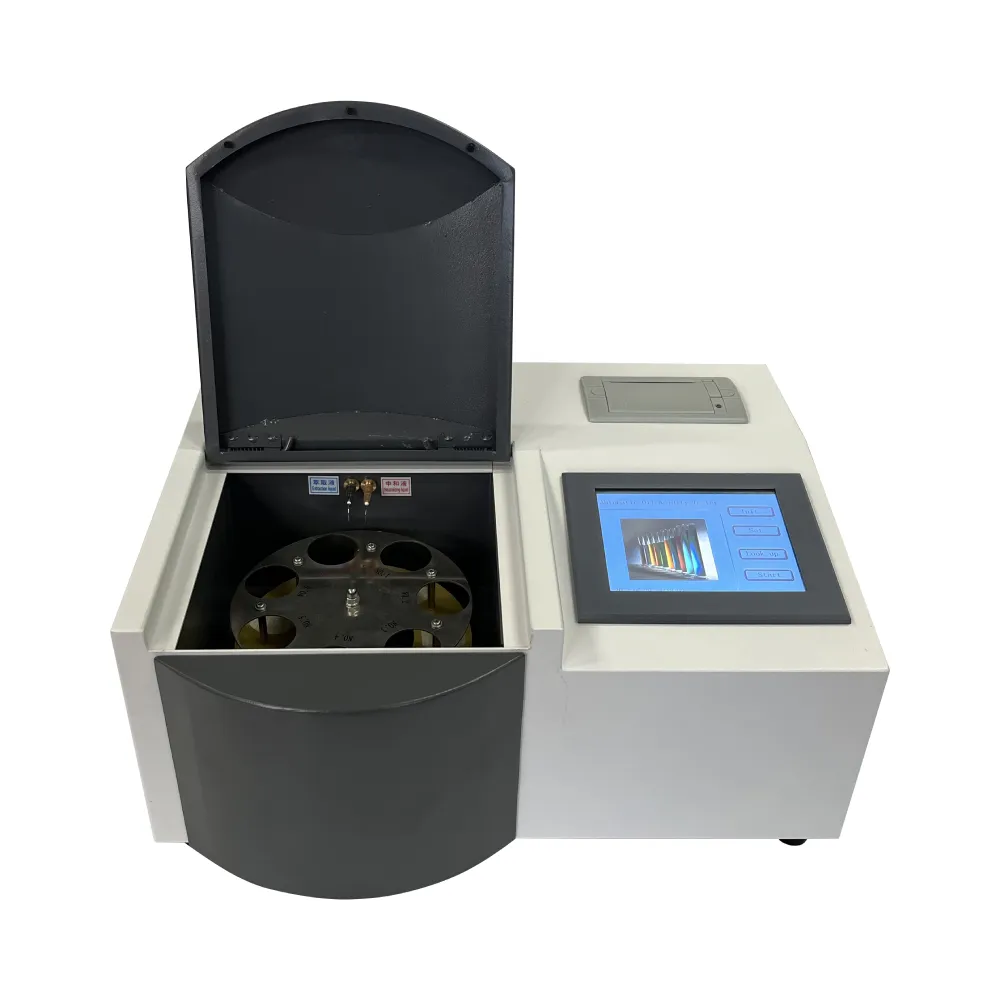TEL:
+86-0312-3189593
 English
English

Telephone:0312-3189593

Email:sales@oil-tester.com

-
 Afrikaans
Afrikaans -
 Albanian
Albanian -
 Amharic
Amharic -
 Arabic
Arabic -
 Armenian
Armenian -
 Azerbaijani
Azerbaijani -
 Basque
Basque -
 Belarusian
Belarusian -
 Bengali
Bengali -
 Bosnian
Bosnian -
 Bulgarian
Bulgarian -
 Catalan
Catalan -
 Cebuano
Cebuano -
 China
China -
 China (Taiwan)
China (Taiwan) -
 Corsican
Corsican -
 Croatian
Croatian -
 Czech
Czech -
 Danish
Danish -
 Dutch
Dutch -
 English
English -
 Esperanto
Esperanto -
 Estonian
Estonian -
 Finnish
Finnish -
 French
French -
 Frisian
Frisian -
 Galician
Galician -
 Georgian
Georgian -
 German
German -
 Greek
Greek -
 Gujarati
Gujarati -
 Haitian Creole
Haitian Creole -
 hausa
hausa -
 hawaiian
hawaiian -
 Hebrew
Hebrew -
 Hindi
Hindi -
 Miao
Miao -
 Hungarian
Hungarian -
 Icelandic
Icelandic -
 igbo
igbo -
 Indonesian
Indonesian -
 irish
irish -
 Italian
Italian -
 Japanese
Japanese -
 Javanese
Javanese -
 Kannada
Kannada -
 kazakh
kazakh -
 Khmer
Khmer -
 Rwandese
Rwandese -
 Korean
Korean -
 Kurdish
Kurdish -
 Kyrgyz
Kyrgyz -
 Lao
Lao -
 Latin
Latin -
 Latvian
Latvian -
 Lithuanian
Lithuanian -
 Luxembourgish
Luxembourgish -
 Macedonian
Macedonian -
 Malgashi
Malgashi -
 Malay
Malay -
 Malayalam
Malayalam -
 Maltese
Maltese -
 Maori
Maori -
 Marathi
Marathi -
 Mongolian
Mongolian -
 Myanmar
Myanmar -
 Nepali
Nepali -
 Norwegian
Norwegian -
 Norwegian
Norwegian -
 Occitan
Occitan -
 Pashto
Pashto -
 Persian
Persian -
 Polish
Polish -
 Portuguese
Portuguese -
 Punjabi
Punjabi -
 Romanian
Romanian -
 Russian
Russian -
 Samoan
Samoan -
 Scottish Gaelic
Scottish Gaelic -
 Serbian
Serbian -
 Sesotho
Sesotho -
 Shona
Shona -
 Sindhi
Sindhi -
 Sinhala
Sinhala -
 Slovak
Slovak -
 Slovenian
Slovenian -
 Somali
Somali -
 Spanish
Spanish -
 Sundanese
Sundanese -
 Swahili
Swahili -
 Swedish
Swedish -
 Tagalog
Tagalog -
 Tajik
Tajik -
 Tamil
Tamil -
 Tatar
Tatar -
 Telugu
Telugu -
 Thai
Thai -
 Turkish
Turkish -
 Turkmen
Turkmen -
 Ukrainian
Ukrainian -
 Urdu
Urdu -
 Uighur
Uighur -
 Uzbek
Uzbek -
 Vietnamese
Vietnamese -
 Welsh
Welsh -
 Bantu
Bantu -
 Yiddish
Yiddish -
 Yoruba
Yoruba -
 Zulu
Zulu
ফেব্রু. . 04, 2025 03:03
Back to list
bdv transformer test
Exploring the various tests associated with transformers reveals a world where electrical engineering meets reliability and safety. Transformers, crucial components in power transmission and distribution, require rigorous testing to ensure their performance, safety, and durability. The range of tests available reflects both the technological complexity of transformers themselves and the high stakes of their application in critical infrastructures.
Interpreting Frequency Response Analysis (FRA) provides additional expertise. FRA evaluates the mechanical integrity of a transformer's core and winding, offering insights into issues such as winding deformation from short-circuits or transportation. Such authoritative analysis is vital for transformers deployed in dynamic environments subject to various physical stresses. Incorporating diagnostics like Partial Discharge (PD) testing establishes a detailed understanding of insulation integrity. PD tests detect minute electrical discharges that could lead to insulation failure if left unaddressed. By employing PD analysis, engineers can attain deeper insights into insulation stress and implement timely interventions. This practice underscores professionalism in transformer care, minimizing risk and enhancing operational continuity. The use of these different transformer tests is not just a technical necessity but an expression of responsible engineering. Their implementation speaks to the trustworthiness of manufacturers and operators who prioritize safety, efficiency, and reliability. Through rigorous testing, transformer manufacturers and utility companies provide confidence to regulatory bodies and the general public, ensuring that power delivery systems operate flawlessly under varying conditions. In conclusion, navigating the landscape of transformer tests illustrates the intersection of engineering diligence and applied innovation. The meticulous design and execution of these tests underscore a commitment to excellence, guiding engineers toward building resilient power systems. As technology evolves, so will these tests, continually adapting to new challenges and expectations. The comprehensive testing of transformers is thus an enduring testament to the pursuit of perfection in the sphere of power systems engineering.


Interpreting Frequency Response Analysis (FRA) provides additional expertise. FRA evaluates the mechanical integrity of a transformer's core and winding, offering insights into issues such as winding deformation from short-circuits or transportation. Such authoritative analysis is vital for transformers deployed in dynamic environments subject to various physical stresses. Incorporating diagnostics like Partial Discharge (PD) testing establishes a detailed understanding of insulation integrity. PD tests detect minute electrical discharges that could lead to insulation failure if left unaddressed. By employing PD analysis, engineers can attain deeper insights into insulation stress and implement timely interventions. This practice underscores professionalism in transformer care, minimizing risk and enhancing operational continuity. The use of these different transformer tests is not just a technical necessity but an expression of responsible engineering. Their implementation speaks to the trustworthiness of manufacturers and operators who prioritize safety, efficiency, and reliability. Through rigorous testing, transformer manufacturers and utility companies provide confidence to regulatory bodies and the general public, ensuring that power delivery systems operate flawlessly under varying conditions. In conclusion, navigating the landscape of transformer tests illustrates the intersection of engineering diligence and applied innovation. The meticulous design and execution of these tests underscore a commitment to excellence, guiding engineers toward building resilient power systems. As technology evolves, so will these tests, continually adapting to new challenges and expectations. The comprehensive testing of transformers is thus an enduring testament to the pursuit of perfection in the sphere of power systems engineering.
Previous:
Next:
Latest news
-
Testing Equipment Industry Sees Major Advancements in 2025: Smart & Precision Technologies Lead the WayNewsJun.06,2025
-
Applications of Direct Current Generators in Renewable Energy SystemsNewsJun.05,2025
-
Hipot Tester Calibration and Accuracy GuidelinesNewsJun.05,2025
-
Digital Circuit Breaker Analyzer Features and BenefitsNewsJun.05,2025
-
Benefits of Real-Time Power Quality Monitoring Devices for Industrial EfficiencyNewsJun.05,2025
-
Earth Fault Loop Testing in High-Rise Building Electrical SystemsNewsJun.05,2025



